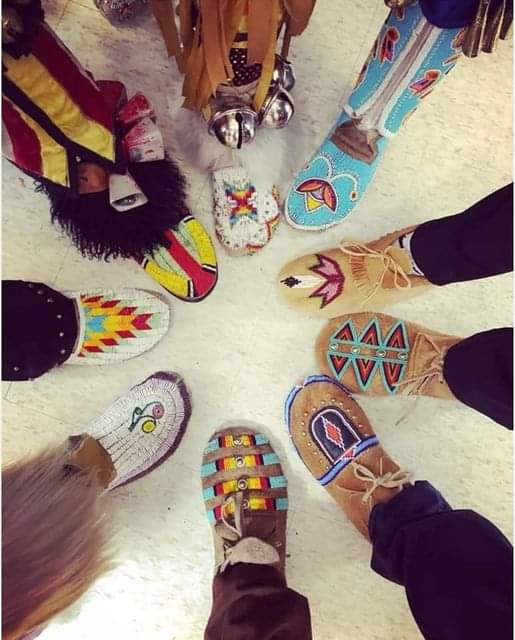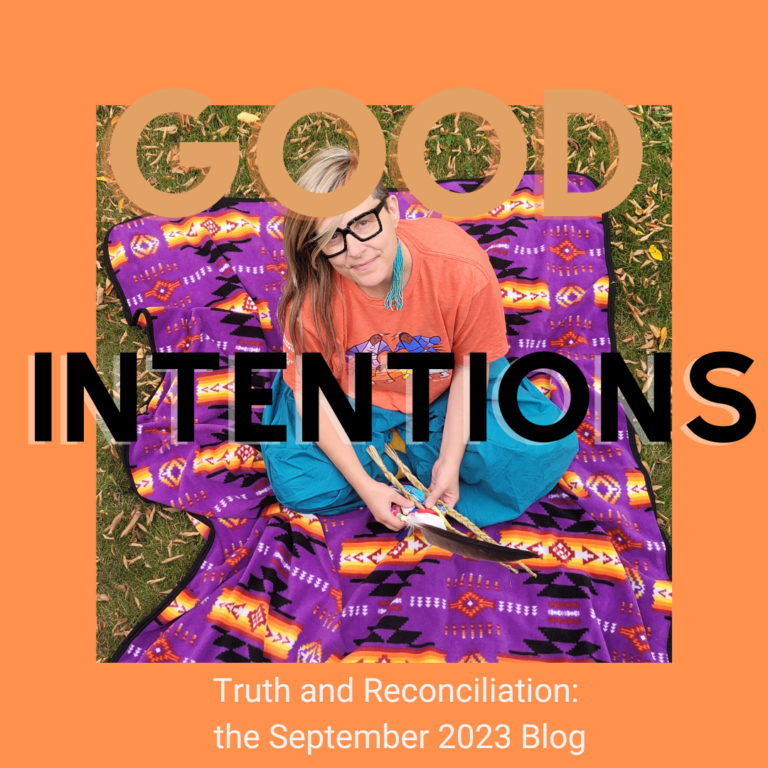Law 693.04: Case Studies for the Seven R’s of Engagement with Indigenous Peoples and Nations
1. Respect
Scenario:
A multinational corporation plans to develop a hydroelectric dam that will affect the waterways of an Indigenous community. The project’s legal team is tasked with consulting the community to seek their consent and discuss potential impacts.
Potential Challenges:
– Cultural Misunderstandings: The legal team may lack knowledge of the community’s cultural significance attached to the waterways.
– Ignoring Protocols: Failing to follow traditional protocols during consultations could offend the community.
– Assumptions: Assuming the community will agree because of potential economic benefits without considering their values.
Strategies to Embody Respect:
– Cultural Education: The team invests time in learning about the community’s history, traditions, and connection to the land and waterways.
– Following Protocols: Engage with Elders and leaders through proper channels, respecting traditional decision-making processes.
– Active Listening: Prioritize the community’s voice during consultations, ensuring their concerns and perspectives are heard and valued.
– Language Sensitivity: Use interpreters if necessary to communicate in the community’s language, demonstrating respect for their linguistic heritage.
Outcomes:
– Trust Building: The community feels respected and is more open to dialogue.
– Informed Decisions: The legal team gains a deeper understanding of the potential impacts, leading to more thoughtful project planning.
– Positive Relationships: Establishing respect lays a foundation for ongoing positive relations, potentially benefiting future engagements.
2. Reciprocity
Scenario:
A university research team seeks to study traditional medicinal plants within an Indigenous territory for potential pharmaceutical development.
Potential Challenges:
– One-Sided Benefits: The community may fear the research will benefit the university and corporations without offering anything in return.
– Historical Exploitation: Past experiences of exploitation may make the community hesitant.
– Intellectual Property Concerns: Worries about losing control over traditional knowledge.
Strategies to Embody Reciprocity:
– Benefit Sharing Agreements: Develop clear agreements that outline how the community will benefit, including profit-sharing or co-ownership of patents.
– Capacity Building: Offer training programs for community members in research methods and sciences.
– Community Projects: Invest in local healthcare initiatives or infrastructure improvements as part of the partnership.
– Acknowledgement and Credit: Ensure the community’s contributions are recognized in publications and presentations.
Outcomes:
– Mutual Gain: Both the research team and the community benefit from shared knowledge and resources.
– Empowerment: Community members gain new skills and have opportunities for development.
– Ethical Research Practices: Sets a standard for ethical engagement and respect for Indigenous intellectual property.
3. Reframing
Scenario:
A policy development team is working on environmental legislation that will affect Indigenous hunting practices. The current framework doesn’t accommodate traditional practices and views wildlife management through a Western lens.
Potential Challenges:
– Cultural Disconnect: The policy doesn’t align with Indigenous understandings of land and wildlife stewardship.
– Resistance: The community may oppose legislation that restricts their traditional rights.
– Miscommunication: Different worldviews lead to misunderstandings in negotiations.
Strategies to Embody Reframing:
– Shift Perspectives: The team actively seeks to understand the Indigenous worldview regarding the environment and integrates it into policy development.
– Collaborative Policy-Making: Involve Indigenous representatives in drafting legislation.
– Education Sessions: Organize workshops to learn about traditional ecological knowledge.
– Challenge Assumptions: Question existing policies that may be based on outdated or biased views.
Outcomes:
– Inclusive Legislation: Policies that respect and incorporate Indigenous practices and knowledge.
– Improved Relations: Demonstrates a willingness to adapt and understand, improving government-community relations.
– Sustainable Practices: Integrating traditional knowledge can lead to more effective environmental stewardship.
4. Relationality
Scenario:
A healthcare NGO aims to introduce a mental health program in an Indigenous community experiencing high rates of depression and anxiety.
Potential Challenges:
– Individual vs. Collective Focus: Western mental health approaches often focus on the individual, whereas the community emphasizes collective wellbeing.
– Distrust of Outsiders: Previous negative experiences may make the community wary.
– Overlooking Social Factors: Ignoring the social and historical context contributing to mental health issues.
Strategies to Embody Relationality:
– Community Engagement: Work closely with community leaders to understand collective needs.
– Holistic Approaches: Develop programs that incorporate cultural practices and support networks.
– Building Connections: Spend time participating in community events to foster genuine relationships.
– Empower Local Leaders: Train community members to lead mental health initiatives.
Outcomes:
– Culturally Relevant Programs: Initiatives that resonate with the community’s values and practices.
– Enhanced Trust: Genuine relationships lead to better program acceptance and effectiveness.
– Empowered Community: Strengthening internal capacities for addressing mental health.
5. Building a Relationship
Scenario:
An energy company wants to lease land from an Indigenous nation for wind farm development. There’s no existing relationship between the company and the community.
Potential Challenges:
– Lack of Trust: The community may be skeptical of the company’s intentions.
– Short-Term Engagement: Approaching the community only when needing something may be seen as exploitative.
– Cultural Barriers: Misunderstandings due to different communication styles and expectations.
Strategies to Embody Building a Relationship:
– Long-Term Commitment: The company invests time in engaging with the community beyond just the project needs.
– Community Involvement: Include community members in planning and decision-making processes.
– Transparency: Openly share information about the project’s benefits and potential impacts.
– Support Community Goals: Contribute to local initiatives, such as education or cultural preservation programs.
Outcomes:
– Strong Partnerships: A foundation of trust and mutual respect is established.
– Collaborative Success: Projects proceed with community support, leading to better outcomes.
– Positive Reputation: The company is viewed as a partner rather than an outsider, benefiting future engagements.
6. Reflection
Scenario:
A law firm has been hired to represent an Indigenous group in treaty negotiations. The firm has a history of successful negotiations but limited experience with Indigenous clients.
Potential Challenges:
– Assumed Expertise: Relying solely on past strategies may not meet the unique needs of the Indigenous client.
– Cultural Insensitivity: Failing to recognize the importance of specific treaty rights to the community.
– Client Disconnection: Not fully understanding the community’s priorities and concerns.
Strategies to Embody Reflection:
– Self-Assessment: The legal team regularly reflects on their approach and seeks feedback from the community.
– Cultural Competency Training: Engage in ongoing education about Indigenous laws and customs.
– Adaptive Strategies: Be willing to adjust legal strategies to align with the client’s values.
– Open Dialogue: Encourage honest communication about what is and isn’t working.
Outcomes:
– Tailored Representation: Advocacy that truly reflects the community’s interests and perspectives.
– Improved Effectiveness: Reflection leads to more effective negotiation strategies.
– Client Satisfaction: The community feels heard and adequately represented.
7. Reflexivity
Scenario:
A government mediator is facilitating discussions between multiple stakeholders, including several Indigenous nations, about resource management in a shared watershed.
Potential Challenges:
– Personal Biases: The mediator’s own cultural background may influence their neutrality.
– Power Dynamics: Failing to recognize how systemic inequalities affect the negotiation process.
– Lack of Awareness: Not understanding how their position affects engagement with Indigenous participants.
Strategies to Embody Reflexivity:
– Self-Examination: The mediator actively reflects on their beliefs, biases, and how these impact their work.
– Seek Guidance: Consult with cultural advisors or colleagues to gain different perspectives.
– Acknowledge Positionality: Be transparent about their role and limitations.
– Continuous Learning: Commit to ongoing personal and professional development in cultural competency.
Outcomes:
– Fair Facilitation: Recognizing biases leads to more balanced mediation.
– Enhanced Communication: Increased self-awareness improves interactions with all stakeholders.
– Respectful Engagement: Indigenous participants feel their voices are genuinely considered.
Application in Legal Contexts
These case studies illustrate how the Seven R’s can guide legal professionals in their interactions with Indigenous Peoples and Nations. By embracing Respect, Reciprocity, Reframing, Relationality, Building a Relationship, Reflection, and Reflexivity, practitioners can:
– Enhance Understanding: Gain deeper insights into Indigenous perspectives and legal issues.
– Build Trust: Establish stronger, more trusting relationships with clients and communities.
– Improve Outcomes: Achieve more equitable and sustainable legal solutions.
– Promote Justice: Contribute to the broader movement toward reconciliation and recognition of Indigenous rights.
Conclusion
Engaging with Indigenous communities requires more than just legal expertise; it demands a commitment to meaningful, respectful, and reciprocal relationships. By applying the Seven R’s, legal professionals can positively impact the communities they serve and work toward a more just and inclusive legal system.






